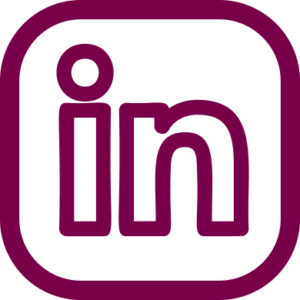“Digitalization Can Make People Think.”
Reflections from site director on the impact of Digitalization on the plant’s safety and other processes.
Digitalization is on the rise in the processing industry, and safety operations are changing at a rapid pace accordingly. There is also a lot of discussion about the current trend toward digitalization of safety processes and how it intersects with making them leaner and achieving the goal of zero incidents.
Does digitalization always improve processes? Can it help reach zero incidents? Or does it stop employees from thinking on their own?
To discuss these questions and the impacts of digitalization, Sjoerd Nanninga, Founder and Director of Unite-X, interviewed Kees van der Sluijs, Site Director at DSM DEM in Emmen.

Sjoerd: If you look at the overlap between digitalization, Lean methodology, and the focus on zero incidents, do you see them strengthening each other or in conflict?
Many people wonder if, in principle, achieving zero incidents is possible when related to safety and quality. Though it is hard to achieve, it is possible. Many factors influence zero incidents, and digitalization is one of the most recent impacts.
Contrary to what many people believe, digitalization does not stop people from thinking independently. Instead, it improves and strengthens processes. People are becoming increasingly aware that digital solutions are part of making flow lean and approaching zero.
Digitalization and Lean methodology are a great combination. Instead of using multiple manual checklists, digital systems can streamline the processes. This helps save both time and resources. Lean methodology and the zero incidents philosophy also work great together. Every incident is a loss of time, effort, and resources. Therefore, by focusing on zero incidents, you actively make the flow Lean.
But what if their plan was more flexible than that? Instead of calling them in for one job, there can be a backlog of potential tasks that meet their skill set. When the original plan falls through, they can simply pick up another task item on the list. And with a bunch of pre-defined templates, handing out permits for this newly-arisen task should not be a problem.

Sjoerd: I’d add two more to this: digitalization frees up space for creativity. And it can also provide data to pinpoint what areas need attention.
Using digitalization to get to zero incidents is a big goal. What steps are needed to reach it?
It is essential to look at things in small, incremental steps. Most workers are not able to immediately analyze the big picture. Instead, they can focus on small steps to take, slowly progressing to the end goal.
Once processes are decomposed into small steps, workers can also identify what is required to improve things. They can bring their suggestions to management, who can respond quickly to a slight suggestion or improvement, rather than needing to approve an extensive overhaul. Thus workers get ownership over the improvement processes. They are also motivated to keep thinking about future improvements and encouraged when they see they are treated seriously and their suggestions implemented.

Sjoerd: We want people to think about continuous improvement. What are the steps you have taken to make this a normal practice?
At DSM, we started DICI, or the DSM Integral Continuous Improvement journey. The goal is to give everyone a base, standard way of doing something. Once everyone utilizes standardized processes and procedures, different maturity levels mean you can implement various things and take more steps. It is a journey for many years and requires effort to improve continuously.
Instead of focusing only on meetings, checklists, and processes, we invest in people’s behavior. We want to stimulate good results and help people change. This means that there needs to be a focus on mindset and behavior—when these come together, you can achieve high performance.

Sjoerd: Now, when you mentioned a standardized approach, in Lean and digitalization, there is a focus on standardization. How do you decide when to standardize? What is the roadmap?
It is not always clear when something needs to be standardized. For example, if some process is rare and hardly occurs, it does not need to be standardized yet.
However, anything regarding tools needs to be standardized, especially while changing shifts. It is vital to have a deep level of standardization so anyone can come and use the tool, knowing precisely what needs to be done.
Another critical area of standardization is when there is a new process. If it has never been done before or is easy to forget, standardization helps everyone be on the same page.
Although even with standardization, you need to build space for people to think about things. It can be dangerous if people only rely on standardized instructions and do not think while they act.

Sjoerd: There is an aging population in the workforce, and it can take a few years to really train people to be effective operators of digital environments. Do you recognize this problem? Are there any solutions?
We do notice a generational difference between operators. Those working for a long time can help train new operators with the SOPs (Standard Operating Procedures) because they know how to work with it hands-on and have years of knowledge to share.
When it comes to digitalizing SOPs or creating new ones, we find that young operators can learn more quickly.
For example, when a new SOP is implemented for a machine, we may place a QR code on the machine. The code links to a video that then explains how to use it. This process is familiar for younger operators, and they can learn very quickly in this way.
The leadership mission is to build the process that supports everyone in the team to smoothly go through changes, regardless of age, experience, or other aspects.
Conclusion
The overlap between digitalization, Lean approaches, and zero incidents creates necessary synergy for the continuous improvement journey. We believe that digitalization positively impacts incident rates and saves time and resources. Moreover, it frees up workers the time to unleash their creative thinking and thus supports them in changing their mindset toward constant recognition of possible improvements.
This article has been adapted from a video interview between Sjoerd Nanninga, Founder and Director of Unite-X and Kees van der Sluijs, Site Director bij DSM Emmen. To watch the full version of the interview, please follow the link.
Interested in exploring further? Read about how technology helps to manage unsafe emotional states.




